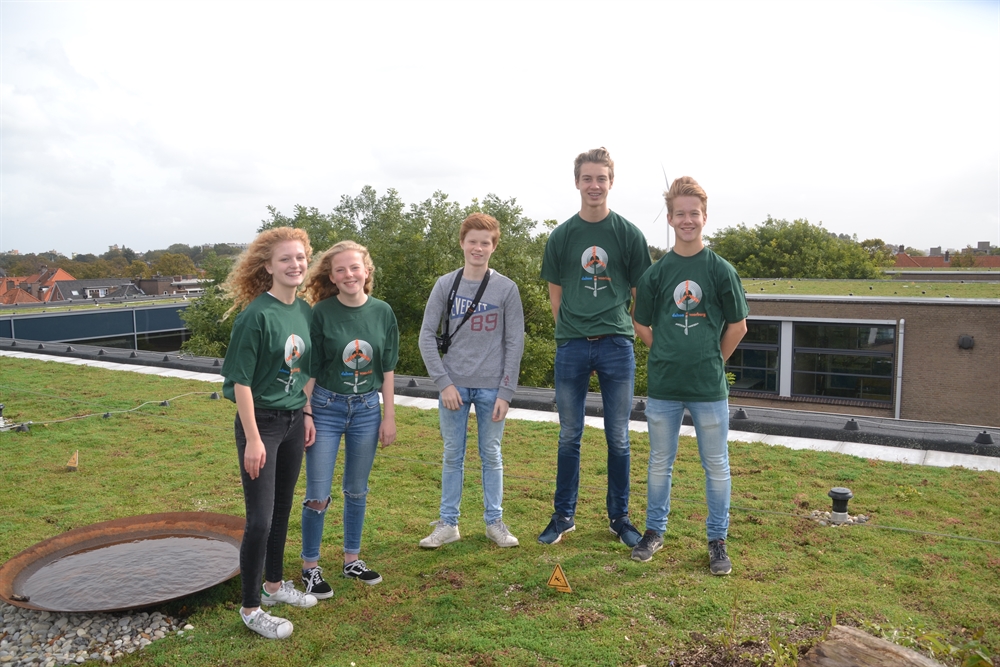Green-blue roof for Dalton secondary school in Voorburg
During a “sustainability” project week at Dalton secondary school in Voorburg, several students came up with the idea of vegetating their school rooftops. The school subsequently consulted with the municipal authorities of Leidschendam-Voorburg and the Delfland district water control board. This has resulted in the realisation of a green roof, featuring both green and blue elements in addition to solar panels. The vegetated roofs will reduce the risk of heat stress and waterlogging. Moreover, the roofs will enhance the area’s biodiversity.

Image: students on the green roof of Dalton secondary school in Voorburg
Vegetated roofs: green and green-blue roof
The rooftop of Dalton secondary school in Voorburg has been fitted with 1500 square metres of living roof. The rooftop comprises two component sections constructed of different materials. The first section of the green roof features a lightweight construction covered with traditional sedum vegetation. This roof section is capable of buffering 24 litres of rainwater per square metre. Furthermore, this roof section has been fitted with solar panels. The green roof underneath will keep the panels cooler and boost their performance.
The second roof section involves a “green-blue” roof with a rock wool material covering (Spongepot). This provides an artificial vegetation soil, comparable to “hydroponic cultivation” in greenhouses. This roof will retain more water: 80 litres per square metre. The rock wool material ensures that collected rainwater is gradually discharged to the sewer system. After 48 hours, the rooftop water buffer will be “available” again to absorb a subsequent rain shower. This also accommodates one of the priorities set out by the water authorities.
Study into the effectiveness of the rooftops
In order to gain insight into the effectiveness of the rooftops, the school is examining:
- The cooling effect of the rooftops, which is determined by measuring indoor and outdoor temperatures;
- The buffering capacity of the rooftops, which is determined by measuring the roofs’ rainwater run-off.
The results of the green rooftops will be compared with the results of the non-vegetated rooftops.
A further study will be conducted on the green-blue roof in order to explore whether its water retention time can be optimised, which would enable optimum utilisation of its water storage capacity during torrential rain. As the green roof and the green-blue roof are situated on the same building, the measurement results compare well. The results of the studies are expected to become available in 2019.
In addition to reducing the risk of waterlogging and keeping classrooms cooler, the rooftops are expected to enhance local biodiversity.
Contact persons
Simon van Damme (gemeente LeVo) and Tjerron Boxem (Delfland)
Scl.van.damme@lv.nl
070-3009089 (Simon)
